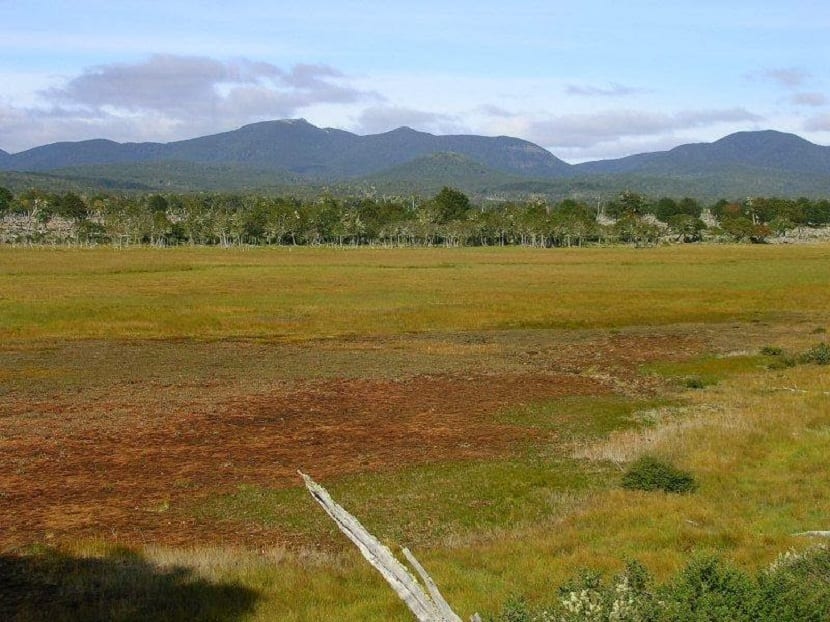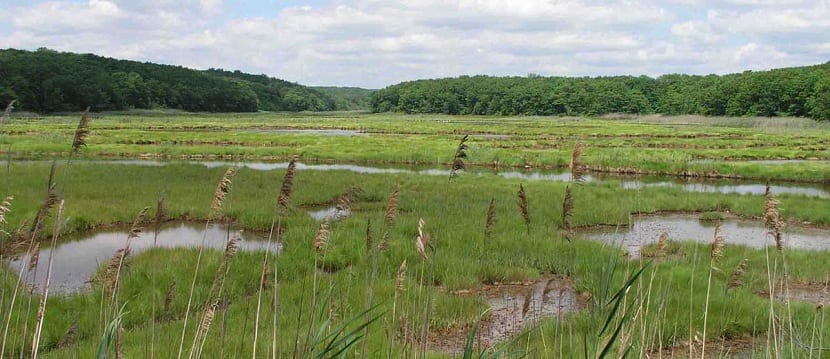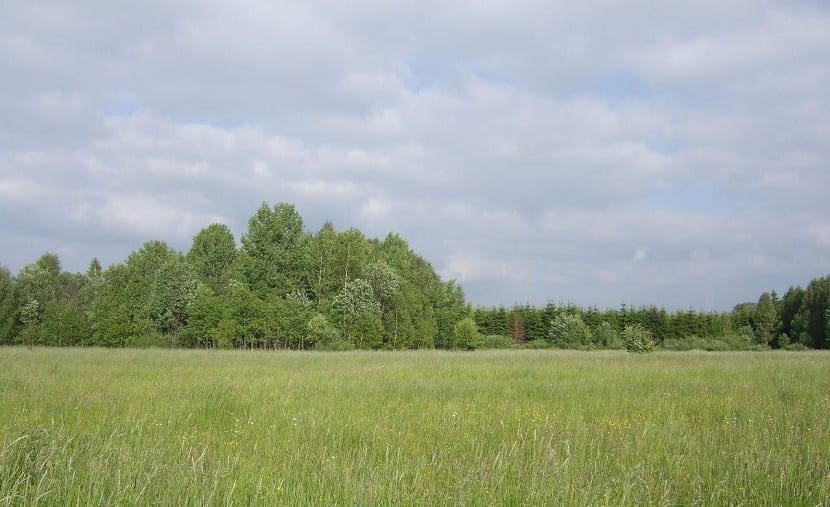
When we read or hear the word ecotone It is more common that we confuse the concept or with something related to an ecological tone. It is a word that is not used in the usual vocabulary and, therefore, the meaning is not usually known. The ecotone is nothing more than a natural transition zone between two different and adjacent ecosystems.
In this article we are going to tell you what the characteristics of the ecotone are and how they are formed.
What is an ecotone

The ecotone is the natural zone that exists between ecosystems with different characteristics. For example, we can find a transition zone between a forest and a plain. The forest does not end at a point or, but it decreases its density little by little. The ecological limit that exists between ecosystems can be up to several hundred meters or even kilometers. The systems can be:
- Biomes. A biome is the geographic area defined by a series of climatic and geological factors that determine the vegetation and fauna that we find in it.
- Landscapes.When we analyze a landscape we can see that the end of a type of ecosystem is not fully defined but that, being a natural space, it has its transition stages between which one area ends and the next begins.
- Ecosystems.An ecosystem is an area where numerous species coexist that interact with each other and with abiotic elements.
- Communities or populations. In this case, we speak of plant populations and tree species. They are the species that most represent the transition zones between different systems.
Why does an ecotone form

These transition zones are formed due to the action of different physical and environmental variables. Among the characteristics that most influence are the climate, topography, composition and structure of the soil or the presence of different types of populations, whether they are animals or plants, which are called biotope.
Depending on these variables and their values, the transition can be more abrupt or more gradual. For example, the existence of a river course may be the end of one system and the beginning of another more abruptly. However, the existence of a mountain and a considerable slope, can cause the end of a forest to gradually transition.
It should be noted that this intermediate zone has a great biological confluence. This means that there are interactions between species in adjacent areas. We also find a greater biological wealth. As greater interactions exist between the individuals of different species, more adaptations will occur in any type of habitat or biotope. This phenomenon is known as the edge effect.
Each species or community of species acts in a certain way depending on the environmental conditions that exist in the ecotone. For example, these conditions may be due to type of pH of the soil, the average temperature, the incident solar radiation, the wind regime or the amount of water available, among others. Taking into account the values of these variables and the interaction between living beings, we can see that each species will specifically fulfill a function within the ecotone. This is called an ecological niche. We can find ecological niches where the functions of each living being can be organizers, decompose tasks, transporters, or dispensers, among others.
Ecotone types

As we have mentioned before, there are different types of ecotone depending on the type of ecosystem that exists between the transition zone. These areas can be divided or categorized in different ways.
1º If we refer to the type of biome, the ecotones will be determined by climatic factors such as water, temperature and topographic factors.
2nd If we refer to the type of landscape, the ecotones will be characterized by the type of climate, the topography and some chemical characteristics of the soil may also be included.
3rd if we talk about ecotones of populations or communities, we have to talk about the influence of the interaction between species and their effect on their composition and distribution.
We are going to put some examples of ecotones and their characteristics:
Tundra and taiga with boreal forest
If we go to America and Europe we can see that there are borders between the tundra and the boreal forest. This is an example of an ecotone between two different biomes that are characterized by having a different climate between each of them. In the tundra we find polar areas with temperatures that do not exceed ten degrees on average. Rainfall is usually 250mm per year. One of the characteristics that stands out in this area is the permafrost. It is a soil that remains frozen throughout the year.
On the other hand, we have the boreal forest that is located south of the tundras. In this ecosystem the average temperature ranges from 30 degrees below zero to 19 degrees. Its rainfall is between 400 and 450mm on average per year. Therefore, the ecotone that forms between these two biomes is not very extensive. However, in Europe we can find an ecotone up to 200 kilometers long. It is characterized by being a fragmented landscape in which there are areas that are covered by dense forests and others in which lichens and heather dominate.
Wetlands
It is another type of ecotone that drifts between a terrestrial and an aquatic ecosystem. This transition zone plays a fundamental role in environmental sanitation, which is why its conservation is vital. This area helps improve water quality by capturing sediment, absorbing nutrients, and releasing chemicals. These ecotones can be:
- Oasis in the desert.
- Forest-savanna-desert.
- Forest-páramo-vegetation area with low height.
- Coast
As you can see, it is necessary to conserve all these geographical areas as they have great biological importance. They are transitions of different forms of life throughout the planet that do not stop contributing their part to the development of living beings.